
Steve McCurry
Capturing Visual Poetry
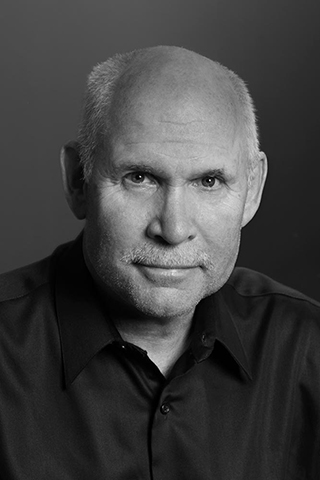
Steve McCurry
© Bruno Barbey/MAGNUM Photos.
Steve McCurry’s images create a marvelous relationship between the subject and the viewer. One recognizes that many of the individuals stare directly into the observer’s eyes. The intensity of the gaze shows a willingness to allow access into each person’s innermost being.
Whether it is McCurry’s ability to identify and interact with those unique individuals, his way of seeing composition or color and contrast, or his ability to tell stories in a completely personal way; the images jump off of the page. It is precisely this defining quality which caused McCurry to gain Kodak’s highest honor: putting an exclamation point on the Kodachrome legacy via imaging the last ever produced roll of 36 exposure film. The 2010 project yielded a collection of images which has been featured in Vanity Fair, and in other venues.
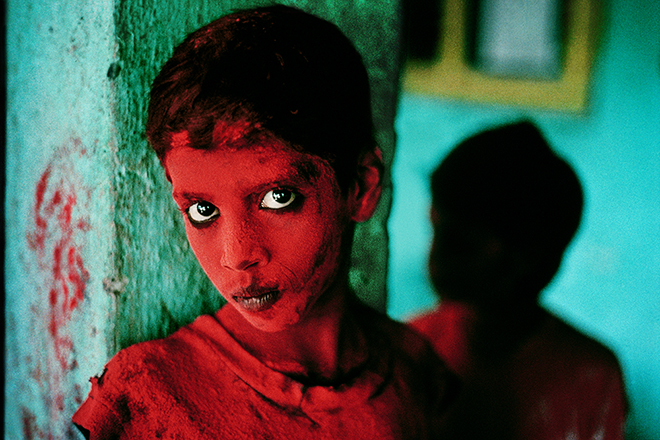
McCurry is a master of creating visual poetry. It is the balance of highlight and shadow, the melody of hue and saturation, the interweaving of shape and form, and the ability to capture the textures of life, which identify this artist. One gets the sense that time and space are magically transformed into another realm. Each piece flows with intensity and with a quiet self awareness. One is drawn to linger over each work, finding nuance and prose in the story.
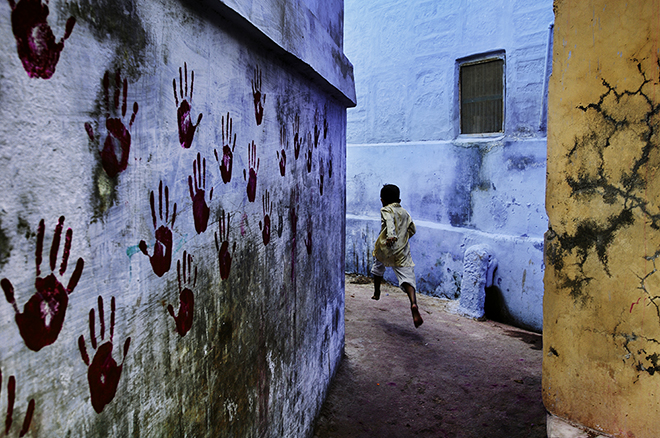
Who is this artist? McCurry tells his story, “I was always more interested in photographers who worked in the tradition of Dorthea Lange, Andre Kertesz, Walker Evens, and Eugene Smith. I was drawn to the work of these black and white photographers. I never really thought of myself as a photographer who depends on color as a tool. The world is in color and I shoot in color. I am more interested in the people who I photograph. In many cases the color is the story. Take, for example the religious festivals where they throw colored dust. There are a lot of instances where color is integral to the story, and the story is more complete in color than it would be in black and white. I never thought of myself as being a color photographer. The most important element to me in my photography is story telling. Design and composition play a lesser role.”
While the story starts in his home of Philadelphia, it takes its shape following two years of local news photography. “I then went to India”, states McCurry. “Language has never been an impediment or a difficulty. Much of what I do is wander and observe. It does not require any translation. If you treat people with respect and humor, most times people are very open. They will open the doors and allow you into their lives.

It does not matter if you are in the Middle East, or Asia, or Africa, or Europe; if you are friendly, and come in with a good attitude, and are respectful, and come at it with good energy, people will respond to it in a good way.”
The images from that self assignment drew National Geographic Magazine’s attention. McCurry commented, “I think that a smart photographer will try to propose a story to a magazine that they are passionate and care about. It is better to be proactive and to seek out stories that you want to tell.”
There is a constant theme which McCurry is energized by. It is the contrast and conflict between cultural traditions and globalization. “The whole world is changing, juxtaposing new against the old. I am interested in preserving the past. There was a time when regional differences and customs which evolved over hundreds of years defined a society. It was recognized in the way that people dressed, the way they spoke, the food they ate, and regional uniqueness. Now that is quickly disappearing.
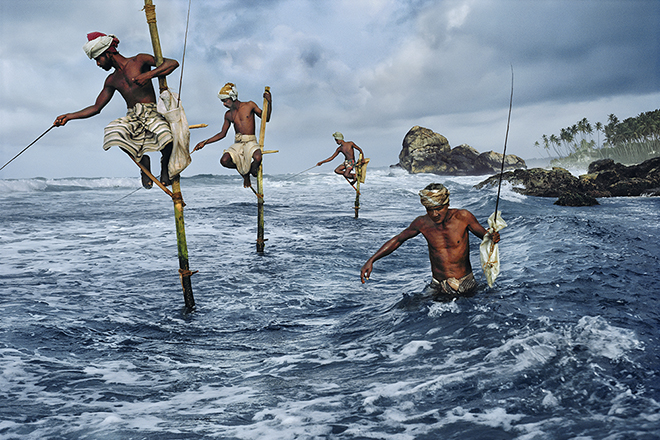
Almost two thirds of my career has been photographing and working in Asia. These are ancient cultures that go back thousands of years. In the case of India, there is a very strong link to the past. You can see disparity between rich and poor with village culture remaining similar to the life hundreds and thousands of years ago. Architecture and landmarks go back centuries.
Clearly, we all recognize how our regions and our country are changing. McCurry comments that the rest of the world, including the Mid-Eastern countries, Near-Eastern countries, and Asia are rapidly becoming homogenized. McCurry summarizes, “I am more interested in these things that are disappearing. When you think of New England or the South, the regional characteristics are almost gone, replaced with strip malls that are identical with the same stores and restaurants. It is all really boring. There is no soul. There is no poetry. What does that lead to? It leads to living in an airport where you could be anywhere in the world and not really know where you are.”
A 2013-2014 project has been commissioned by the International Labour Organization arm of the UN. McCurry documents the lives of laborers living in Hong Kong, the Philippines, Indonesia, Nepal and Thailand. The charter of the ILO is to promote social justice in the workplace, on behalf of the United Nations. The images will draw attention and public support to the cause of individuals who are at risk.
McCurry is working on another current project, which is an adaptation of the Andre Kertesz book entitled, On Reading. It captures the moods, times, and places, where individuals are found engrossed in their books.
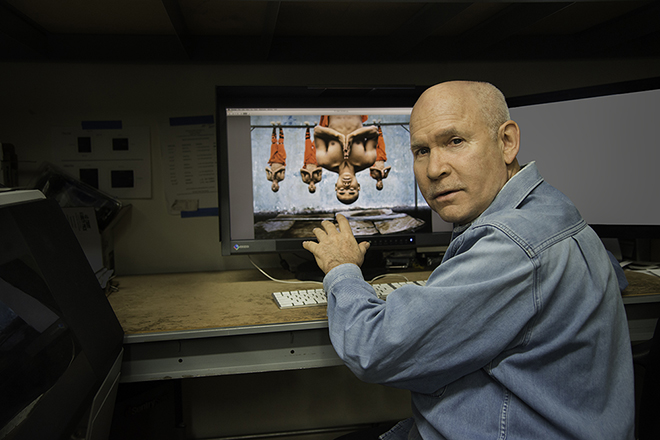
While working on these projects, McCurry began using the EIZO ColorEdge CG276 monitor. It significantly improved the workflow and the ability to see discreet colors. He comments, “I can accurately preview the quality of the color, and the resulting impact within my images. With it's wide color gamut and outstanding color accuracy, the EIZO monitor is the essential photographer's tool--making on screen color adjustments and proofing a seamless process. Furthermore, it's extensive hardware calibration capabilities guarantee these results time and again. My images on screen and in print are now in close agreement. I attribute this to the excellent technology built into the EIZO CG276 monitor.”
Switching the thought process from current work to previous interests, McCurry indicated that he has had several favorite projects in the past, including Monsoon. The images define the traditions and tenacity of mankind through the adversity of heavy rain and flooding. Striking in the rawness of the elements, and compounded by the rich colors of the subjects. The story tells of the unflappable spirit of the individuals. The collection leaves an indelible impression.
Gulf War depicts utter destruction of life, property, and resources. The cost of war is documented in a profound collection of hard-hitting photographs.
Journey across India with Paul Theroux
Following several British colonial rail routes dating back to the 1800’s, McCurry and writer Paul Theroux travel via eleven connecting trains. The travels cover the span of Northwest Pakistan through northern India to southeastern Bangladesh, and include side trips through Simla and Darjeeling. McCurry captures the people and the landscapes found along the journey.
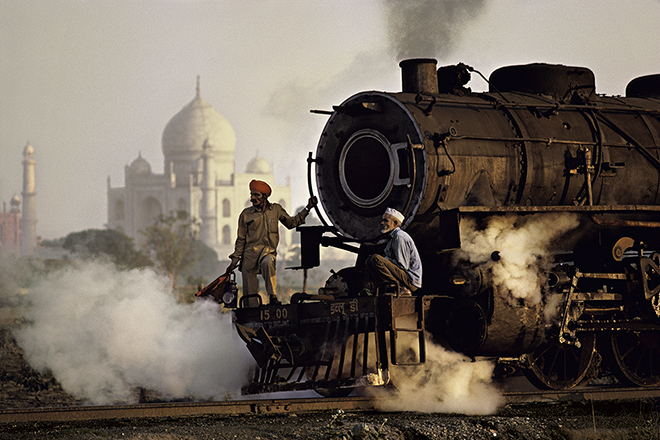
Sunset Boulevard, Los Angeles
Traversing Los Angeles along Sunset Boulevard, McCurry documents the diverse sights and activities of a city on the edge of the Pacific Ocean. The story line blends geographic location with a view of people from differing socio-economic conditions.
2013 Pirelli Calendar
Recognized for drawing photographic talent from the likes of Richard Avedon, Helmut Newton, Annie Liebowitz, Herb Ritz, and Peter Beard; the Pirelli Calendar has been a showcase for A list photographers and their supermodel subjects. McCurry chose to highlight each of the 2013 model’s charitable and humanitarian endeavors.
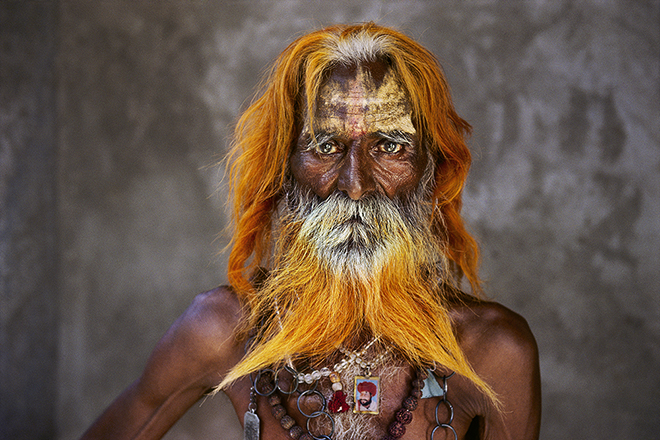
The body of work is diverse in scope, but linked by a common thread. Each image elevates the subject’s uniqueness. Viewers are given a wonderful vantage into the lives of others. The compositions embody a visual style which is distinctly that of Steve McCurry.



